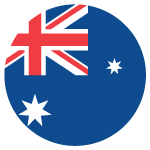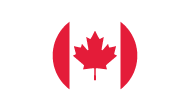
Study in Australia
Study in Australia
Australia a country rich in natural wonders and vibrant culture, stands out as one of the most developed nations globally. Its stunning beaches and modern lifestyle captivate many. When it comes to education Australia offers a unique and unparalleled system. Those who have embarked on their academic journey here are well aware of the exceptional quality of education.
If you’re considering this opportunity, partnering with the Best Australia Education Consultancy can make a significant difference. Australia Education Consultants provide tailored guidance while education consultants for Australia in Ahmedabad can help you navigate the application process smoothly. certainly a Study in Australia Consultant to unlock your potential in this remarkable country.
Education System in Australia
Australia’s education system is known for its high standards and innovative approach. With a focus on practical skills and research students benefit from a diverse range of courses and world class institutions. From primary education to universities Australia provides a supportive environment for learners. To navigate this system effectively consider the Best Australia Education Consultancy for personalized guidance. Australia Education Consultants can help you choose the right programs while education consultants for Australia in Ahmedabad ensure a smooth application process. Confide a Study in Australia Consultant to achieve your academic goals.
Reception/Primary School
Primary education begins from the age of 4 to 5 years till 7 to 8 years. In primary education, students learn all the essential learning concepts that support them a lot in their further educational journey. Moreover, considerable skills are developed at this first-stage of education.
Secondary School
In Australia, secondary education is compulsory for all students. Study After 12th students proceed with this secondary level of education. But for the next level of education, and onwards, it is mandatory not to skip any standard or year.
Senior Secondary School
In senior secondary schools, the real journey of a child as a student begins. The subjects are divided. The educational level becomes tougher; student observes a dramatic difference between traditional education and advanced curriculum. Students get the option to choose from assortments of subjects. In most instances, schools are also changed.
Types of Schools
In the Australian Education system, you find either public colleges or private educational institutions. However, both options are good on their own and satisfy the student’s requirement. Still, there are a few points that you must take into account if you are also planning to study at Australian University. The government of Australia predominantly runs public schools; hence they can be an affordable alternative. On the other hand, private institutions and colleges are run by individuals. Therefore, they can be a bit expensive too. But in terms of facilities, private institutions often appear to be dominating.
Tertiary Education
After completing senior secondary education, students pursue higher education and build the foundation of his/her career and profession—the Australian educational system runs world-class bachelor’s degree programs. Students can either choose public universities or private institutions to proceed with their graduation. However, if you select a highly-accredited program such as medical or science, you may require to give an entrance exam first. But if you are pursuing a standard graduation course, entrance isn’t needed. It makes the Australian Education System quite similar to other countries, e.g., India.
But make sure you are holding a 12-year schooling certification in hand. Only then you can get admission to colleges and universities. Apart from that, students may also require to show their Australian Tertiary Admission Rank or ATAR score. Only then can they get entry into a particular course. The conditions apply to both national and international students.
Post Graduate or Post university accreditation
After completing graduation, students may consider the master’s programs. If you want to gain a master’s degree in science, business, or medical field, postgraduate is the asset’s name. A master’s degree program opens new doors to opportunities for you. It gives rise to your profession and job prospects.
Visa Guidelines
Without VISA, no country will allow you to even breathe in their area. After all, it is a matter of security and safety. So you don’t get stuck into any problem, make sure you are applying for VISA appropriately.
First, apply for admission in a respective Australian school or college. Thereby, the school will send you an offer letter, accept it, pay the fees mentioned on it, and send it back to the school/college/university. Now you’ll receive CoE (Confirmation of Enrolment) by them.
Take this vital document for your Visa application. If you have take admission in several programs, get the CoE of each program.
Create your account with the immigration authorities of Australia for further visa application at- https://online.immi.gov.au/lusc/register.
Submit the asked details. Keep ready all the documents mentioned below in a digital format-
- CoE
- OSHC Health Insurance
- Passport should be valid till the date you will stay in Australia.
- Proof of Temporary Stay- it can be any proof that ensures your temporary stay in Australia.
- Other documents.
Work After study in Australia
Once you have graduated or post-graduated from Australia, you can start your career. But for international students, you just have to pursue your dream to stay in Australia. There are different ways that you can stay and work in Australia so it is important to know what options are available.
You can get useful tips by consulting the Best Australia Education Consultancy. Australia Education Consultants give personalized targeted advice, whereas education consultants for australia in ahmedabad eases the way. Consult the Study in Australia Consultant and make knowledgeable decisions for your career.
Permanent Residency
For permanent residency, you have some of the best alternatives, and Employer Nomination Scheme is one of them. As per this scheme, you can work in Australia for your employer as long as they want. In most instances, this scheme can also provide you with a permanent residency in Australia if the employer is ready to sponsor you.
Students from professional courses, such as engineering, computer science, and accounting courses, can also get admission in a further education program to develop their skills. If you are an expert in something, it can build strong chances for permanent residency in Australia.
List Of Universities
- The University of New South Wales, Sydney (CRICOS Code 00098G)
- The University of Queensland, Brisbane (CRICOS Code 00025B)
- The Monash University, Melbourne (CRICOS Code: 00008C)
- The University of Adelaide, South Australia (CRICOS Code 00123M)
- The University of Newcastle, Callaghan (CRICOS Code 00109J)
- Queensland University of Technology, Brisbane. (CRICOS Code 00213J)
- Curtin University (CRICOS Code: 00301J)
- Macquarie University, Sydney (CRICOS Code 00002J)
- RMIT University, Melbourne. (CRICOS Code 00122A)
- Deakin University, Melbourne & Geelong. (CRICOS Code 00113B)
- University of South Australia, Adelaide. (CRICOS Code 00121B)
- University of Tasmania, Hobart, Launceston and Sydney (CRICOS Code 00586B)
- Griffith University, Gold Coast & Brisbane (CRICOS Code 00233E)
- James Cook University, Townsville and Cairns (CRICOS Code 00117J)
- James Cook University, Brisbane. (CRICOS Code 00117J)
- Swinburne University of Technology, Melbourne. (CRICOS Code 00111D)
- La Trobe University, Melbourne. (CRICOS Code 03312D)
- La Trobe University, Sydney Campus. (CRICOS Code 00115M)
- Flinders University, Adelaide. (CRICOS Code 00114A)
- Western Sydney University, Parramatta. (CRICOS Code 00917K)
- CQ University Australia, Sydney, Melbourne, Brisbane & Perth. (CRICOS Code 00219C)
- Southern Cross University, Gold Coast, Lismore and Coffs Huour (CRICOS Code 01241G)
- Southern Cross University, Sydney, Melbourne & Perth. (CRICOS Code 01241G)
- University of Southern Queensland, Toowoomba, Queensland (CRICOS Code QLD 00244B, NSW 02225M)
- University of Southern Queensland Sydney Education Centre. (CRICOS Code NSW 02225M)
- Australian Catholic University, North Sydney, Melbourne, Brisbane, Canberra, Adelaide. (CRICOS Code 00004G)
- Charles Sturt University, Wagga Wagga, Sydney, Melbourne & Brisbane. (CRICOS Code 00005F)
- Federation University, Melbourne & Sydney (ATMC). (CRICOS Code 000103D)
- University of Sunshine Coast, Melbourne & Sydney (ATMC). (CRICOS Code 01595D)
- Victoria University, Sydney Campus. (CRICOS Code 02475D)
- Le Cordon Bleu, Adelaide, Sydney, Melbourne & Perth. (CRICOS Code 02380M)
- La Trobe College, Melbourne. (CRICOS Code 03312D)
- Deakin College, Melbourne. (CRICOS Code 01590J)
- Edith Cowan College. (CRICOS Code 01312J)
- Griffith College, Gold Coast & Brisbane. (CRICOS Code 01737F)
- Sydney Institute of Business & Technology. (CRICOS code 01576G)
- South Australia Institute of Business & Technology, Adelaide. (CRICOS Code 02193C)
- Curtin College, Perth. (CRICOS Code 02042G)
- Eynesbury College, Adelaide. (CRICOS Code 00561M)
- Newcastle International College. (CRICOS Code 03293B)
- Western Sydney University Sydney City Campus (CRICOS Code 00917K)
- University of Canberra College, Canberra (CRICOS Code 00212K)
- Australian College of Applied Psychology, Sydney (CRICOS Code 01328A)
- James Cook University College (CRICOS Code 00117J)
- Australian National University College, Canberra. (CRICOS Code 01682E)
- Flinders International Study Centre, Adelaide. (CRICOS Code 01682E)
- Taylors College, Perth & Sydney (CRICOS Code 01682E)
- The University of Sydney- Foundation Programs (Through Taylors College) (CRICOS Code 00026A)
- UTS Insearch, Haymarket, New South Wales (CRICOS Provider Codes: UTS Insearch 00859D, UTS 00099F)
- Australian Technical & Management College, Melbourne. (ATMC CRICOS Code 03013D)
- SAE Institute, Brisbane, Sydney, Melbourne, Adelaide & Perth. (CRICOS Code 003121)
- The University of Adelaide College (CRICOS Code 00123M)
- ECA Graduate Institute (CRICOS Code 02997M)
- Asia Pacific International College, Sydney & Melbourne. (CRICOS Code 03048D)
- English Language School in Sydney. (CRICOS Code 02644C)
- Sarina Russo Institute, Brisbane (CRICOS Code 00607B)
- International College of Management Sydney. (CRICOS Code 01484M)
- The Imperial College of Australia, Melbourne. (CRICOS Code 02858M)
- Education Access Australia, Melbourne. (CRICOS Code 02450B)
- Engineering Institute of Technology, Perth (CRICOS No: 03567C)
- Canterbury Business College, Sydney (CRICOS Code 01899K)
- Canterbury Technical Institute, Brisbane (CRICOS Code 02938M)
- Canterbury Language Academy, Sydney (CRICOS Code 02534J)
- Airways Aviation, Gold Coast and Sunshine Coast (CRICOS Code 00296A)
- Amber Aviation Academy, Melbourne (CRICOS Code 03462A)
- Monash College International Twinning Program










